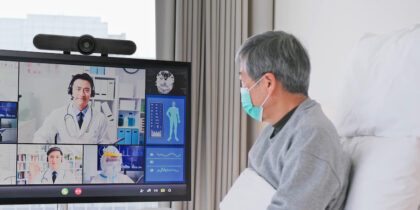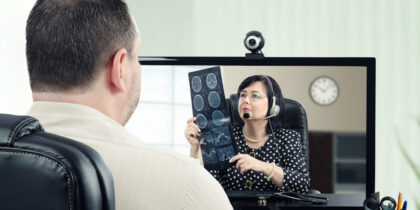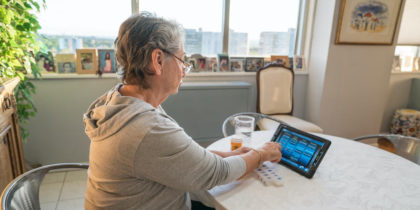Remote health monitoring has revolutionized the way healthcare providers care for patients.
While at HIMSS, I spoke with Britney Treadaway, VP of strategy and corporate development at IDEAL LIFE, about the ways their platform is improving the management of chronic illnesses through remote health monitoring.
“In today’s healthcare marketplace, providers have become more and more responsible for the care that their patients receive,” Treadaway said. “Remote health monitoring [gives] the provider next-level insight into their patient’s daily routine.”
With remote monitoring devices and a tablet or smartphone, patients are able to conveniently take their vital readings at home, allowing providers to generate alerts and view data as it’s collected. “We’ve partnered with Samsung to make sure that we’re providing industry-leading hardware and security solutions,” Treadaway said.
IDEAL LIFE uses Samsung Knox to customize the mobile devices that patients use to access the platform. Knox Configure has allowed IDEAL LIFE to streamline the user experience, while Knox Manage helps roll out applications and perform remote troubleshooting.
The real value of remote patient monitoring is that it allows providers to gain much greater insight into a patient’s condition, and potentially make lifesaving interventions. “When a patient takes their readings at home, the provider has the ability to generate an alert based on that reading, and they are able to view those alerts in real time,” said Treadaway. “[They can] use that information, along with other contextual information … to make more informed decisions.”
One thing that sets IDEAL LIFE apart is its integrations with some of the largest electronic health records (EHR) systems. “Those readings, when the patient starts to take them, filter in directly to the record and they have that data available to them,” Treadaway explained — ultimately creating a more efficient healthcare practice.
Learn how forward-thinking healthcare providers are using technology to improve the patient experience and health outcomes in our in-depth guide, “From the Hospital to the Home.“






